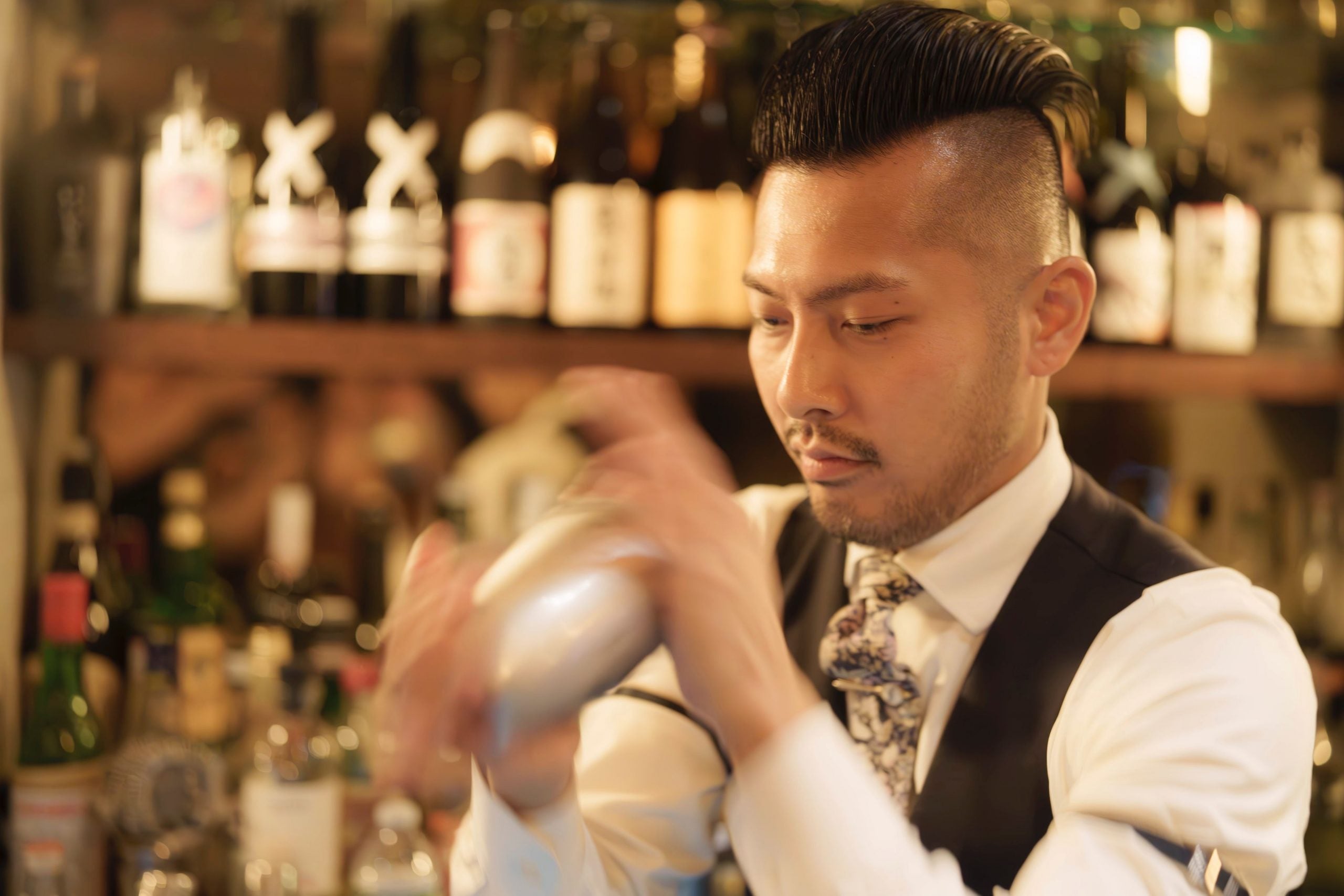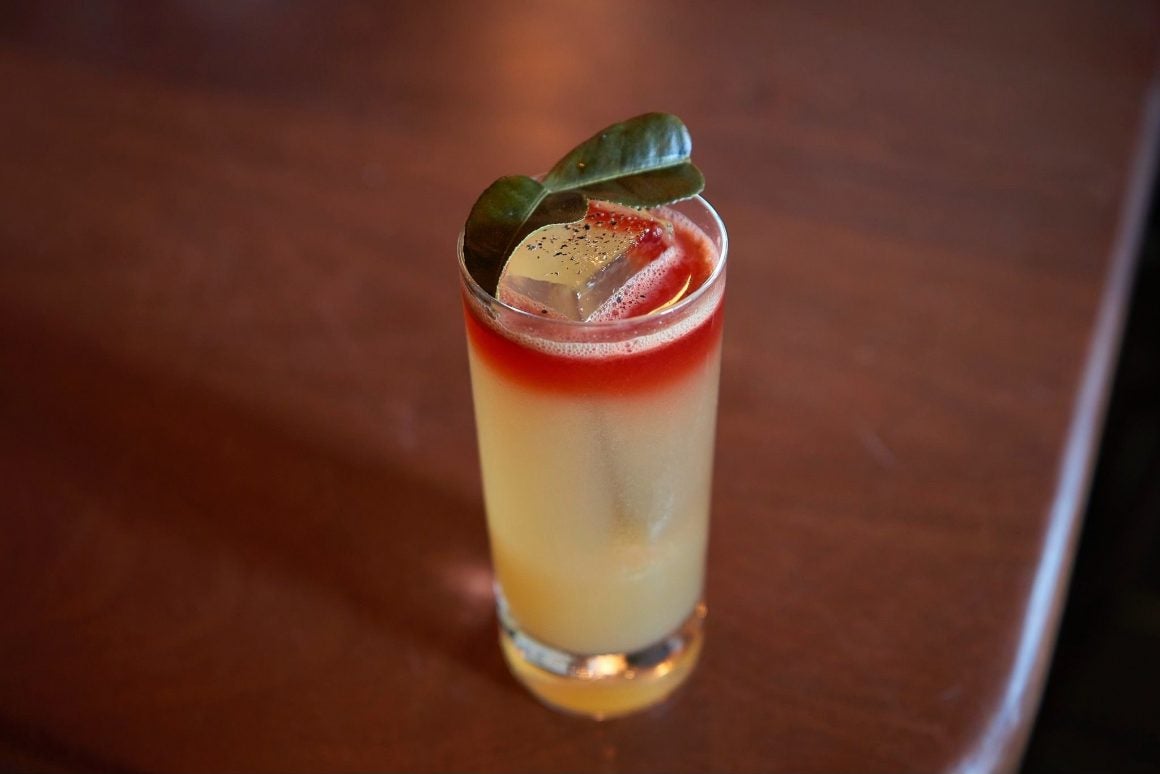It all starts with the right kind of ice, according to Hirotomo Akutsu.
In the past, in Japan, ice would be harvested from rivers and lakes in winter to preserve food and beverages. Time progressed and technology with it and ice production became ubiquitous. But Japanese bartenders still take great care in selecting their ice, making sure to use the highest-quality, purest ice for each cocktail. The art of mixology in Japan includes the art of ice.
“By breaking and cutting the ice into sizes suitable for shaking, stirring, or serving, they can significantly improve the melting time and dilution compared to machine-made ice,” says Hirotomo. “This results in a more beautiful appearance and enhanced customer experience.”

Hirotomo was not always an expert mixologist, but even as a young child growing up in Tokyo, he enjoyed traveling with his parents, visiting new cities, and observing the people living there. Hirotomo was captivated by the world, and with the way that ideas could be reflected in culture.
The world of fashion was his first destination, and after high school he attended a fashion vocational school in Tokyo, completing a stylist program, and thinking of going even bigger. Even then he saw himself in New York, and dreamt of opening up his own fashion business. He traveled around, visiting Australia, the UK, and the US, gaining wider knowledge of the world. But back in Japan, he noticed how deep connections could be formed over drinks.
“Cocktails, much like fashion, tell powerful stories — reflecting the rich complexity of life, food, and tradition,” says Hirotomo. “It made me reflect on how both fashion and beverages are expressions of mood and occasion.” Deciding on his next big move in life proved to be simple.
Hirotomo decided to be a bartender.
The World of Cocktails
Hirotomo got his career started at Two Rooms Grill and Bat in Tokyo’s Aoyama district, and later moved into Bar Trench in Ebisu, a hotspot in the city for restaurants and bars. In both places, he developed his skills as a mixologist, drawing upon his fashion talent.
“The world of cocktails is as creative and flexible as fashion, making it both exciting and challenging,” says Hirotomo. “When I develop cocktails, I reflect my story and concept in elements like taste, glass presentation, and garnishes,” he says.
As a Japanese bartender, Hirotomo also pays special attention to the freshness of ingredients and how to incorporate unique Japanese flavors—such as wasabi, yuzu, shiso, plum, vinegar, shochu, and sake—into the cocktails to achieve a delicate final product.
One of the cocktails he previously developed is called ‘Earth Wind and Fire.’ It’s a shaken cocktail made with mezcal, his original red pepper cordial, chili liqueur, bitter liqueur, quinine liqueur, citrus juice, and celery bitters.
“At that time in Tokyo, mezcal wasn’t well-known and wasn’t a popular ingredient among Japanese people,” recalls Hirotomo. “However, this cocktail helped bring attention to the earthy flavors of mezcal, along with its balance of spiciness and acidity, leading to the growing popularity of mezcal cocktails.”
Hirotomo got plenty of practice in Tokyo. His old fashion world connections still in place, he found himself catering events organized by big brands like Chrome Hearts and Nikka. He also got a good taste of New York when he tended bar at an event for hip hop legend and Harlem native Nas.
Hirotomo created his own drinks for these events, combining his fashion taste with mixology. Japan stayed front and center, as he included traditional spirits like shochu and sake in the mix.
In his Tokyo days, Hirotomo also got promoted. He was named café bar manager at Bar Trench’s sister establishment, Bar Tram. Bar Trench also received some awards at that time. But Hirotomo was still dreaming of New York.
The Big Apple
Hirotomo’s dream is to popularize Japanese-inspired cocktails in New York, where he hopes they will find an audience among its vibrant, multicultural public. “My goal is to blend the beauty of Japanese art with the allure of high fashion, creating a revolutionary approach to the bar industry,” he says.
He’s brought his philosophy toward drink making with him to the US’ largest city, but he also keeps his eyes open for new opportunities and ideas—anything that can help him make his cocktails more of an immersive experience for people. He’s also focused on sharpening his technical skills and has been eagerly learning about the local culture, history, and traditions.
“For me, the inspiration for cocktail design often comes from everyday life,” says Hirotomo. “It might be when I encounter unfamiliar ingredients while traveling or experience a new landscape and its scents.”
That gets Hirotomo thinking about the drink’s color, aroma, and the garnishes of the cocktail. When the drink is ready, and he presents these new flavor combinations to his customers, they embark on a discovery of new tastes. And he always includes something Japanese in whatever he does, whether he’s in New York or anywhere else.
“By suggesting ways to use distinctive Japanese ingredients in cocktails, I can captivate those who try them,” says Hirotomo. “Additionally, I can also teach and share how to work with Japanese ingredients with bartenders and mixologists from other countries.”

